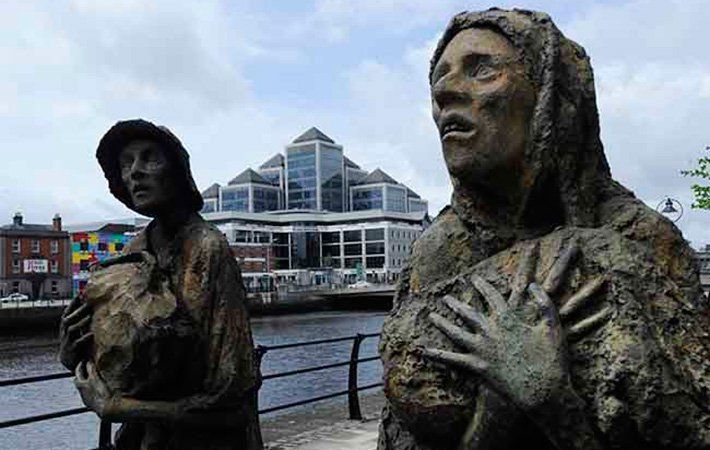How We Choose to Remember…
Location: Rowan Gillespie’s Famine Memorial in Dublin
Tuesday, October 23 – Across the world there exists a vast continuum of recollection reflected in Ireland’s Great Hunger art and story.
Margaret Kelleher, Chair of Anglo-Irish Literature and Drama at University College, Dublin addresses the challenge of how we choose to remember an event that has been called everything from an unfortunate tragedy to mass murder.
As a prelude to her exploration of sites and social memories of the Irish Famine, the 13thAnnual St. Patrick’s Society Lecture, Dr. Kelleher, speaking to a packed room at Concordia University in Montreal, began with a memory of her own: a visit to Grosse Île Canadian Irish Memorial National Historic Site in 2006, accompanied by the late famine historian Marianna O’Gallagher.
After this visit, Marianna had presented Margaret with a copy of her book: Grosse Île: Gateway to Canada, with the inscription: “souvenir du’ne belle journée dans la presence de nos ancetres” – “a memento (or souvenir) of a beautiful day in the presence of our ancestors”. It was this inscription that prompted Dr. Kelleher “to reflect in a more explicitly personal register than hitherto on the familial dynamics of famine commemoration and social memory.”
These dynamics see families move in and out, across generations and on both sides of the Atlantic from Grosse Île to Macroom, County Cork as they live out the threads of the famine narrative, transmitting memories of famine events to create a “public memory”, giving voice to those whose voices might otherwise not be heard.
Dr. Kelleher then takes us on a journey to visit a number of Irish Famine monuments, from the abstract and controversial Delaney Monument, overshadowed by the statue of Theobald Wolfe Tone in St. Stephen’s Green in Dublin to Gillespie’s tableaux on the Dublin Custom House Quay, The Irish National Famine Monument in Murrisk County Mayo, the Children’s Strand in Carraroe, Co. Galway, Staten Island and the U.N. Plaza in New York, the Boston Freedom Walk and the Philadelphia Monument. She guides us to witness the differing famine narratives and spectrum of emotions: anger, fear, heartbreak, wretchedness, despair, and hope. She reminds us that, between genocide and benign neglect, there exists a vast continuum of recollection reflected in art and story.
The above sections were excerpted from Irish Central. To read more, click on this link! https://www.irishcentral.com/roots/history/memory-memorials-irish-famine






